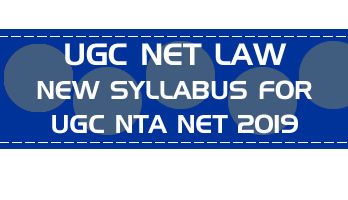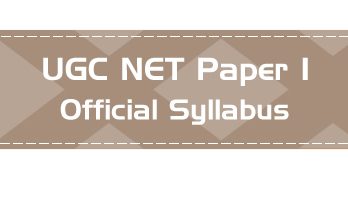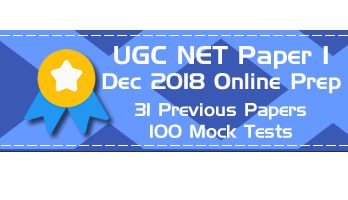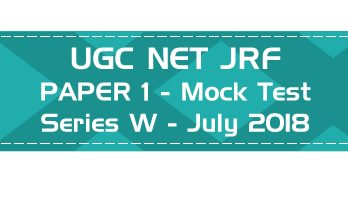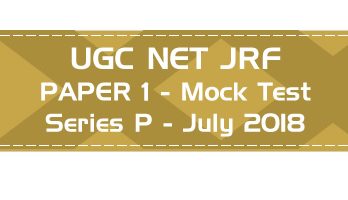- Latest Pattern Mock Tests including comprehension based questions
- Previous Question Papers with Answer Keys - From 2004 till the most recent exam
- 75 Full Length Mock Tests - New Pattern Paper II, with 100 questions each
- 50 Mini Practice Mock tests - with 25 questions each
- Unlimited Practice - New Questions in every attempt of all mocks
- Questions & Answer Choices randomly shuffled in every attempt for better practice
- Database of over 11000+ MCQs covering the entire syllabus
- Unlimited access and practice for one year from the date of purchase
- Accessible 24 x 7 via Smart-Phone browsers and Desktops
Authentic Feedback from previous LawMint users :
I got AIR 21 in CLAT PG. Thank you so much. Your mocks helped me a lot in my preparation 🙂 - Ayushi Jain
I have subscribed to your CLAT PG program and got AIR 36 in this year CLAT PG. I have also secured AIR 54 in AILET PG exam. I would like to thank you. Your mock paper really helps a lot - Shrashank Tripathi
I would like to thank you for the CLAT PG LLM COURSE. Practising mock tests there helped me in getting confidence and hence I was able to get AIR 45 in CLAT PG LLM - Akshay Awasthi
A year back, I relied on the IIT Kharagpur RGSOIPL mock test series by LawMint to prepare for my RGSOIPL entrance test. Few months back, I relied on your UGC NET Law series to prepare for UGC NET. I was the topper of the RGSOIPL entrance, and have cracked JRF in UGC NET. All thanks to LawMint - Anshuman Sahoo
"I got AIR 18 in CLAT PG and General Category rank 28 in AILET PG. I want to thank you for helping me practice well in controlled conditions from any place. It gave me a lot of confidence and I took the tests while travelling too. I also made it to IIT Kharagpur." - Vinodharani
"Lawmint has been of great help to me in securing AIR 25 in AILET PG and AIR 29 in CLAT PG examinations. The subjective and objective approach of the test series kept me up to date with the latest exam pattern." - Bhawna Nanda
"I, Nimmy Saira Zachariah joined you clat test series. I cleared AILET PG with 30th rank. Your test series were of immense help as it gave me clear idea of where my preparations stand thank you once again law mint." - Nimmy S Z
"Hey guys. Where do I start? If I thought that getting AIR 59 in Clat PG was it, then how wrong I was. With Lawmint now I have cracked UGC NET as well." - Joyanta Chakraborty
Note : Answer Keys to all Previous Question Papers published on LawMint are available to registered users of LawMint.com Online Practice Packs.
Check out all the HECI NTA NET or UGC CBSE NET Paper 1 previous question papers here : Previous Papers & Mock Tests
Note : UGC has rolled out a revised syllabus for both Papers 1 & 2 from Jan 2019 onward.
1. In a Ph.D. thesis which one is the correct sequence for showing scheme of Chapterisation ?
– Survey of related studies, Introduction, Design of the study, Data-Analysis and interpretation, Conclusions and generalisations, suggested further study, References, Appendix
– Introduction, Design of study, Data Analysis and Interpretation, Generalizations, Conclusions and Survey of related studies and suggestions for further research, References and Appendix
– Introduction, Survey of related studies, Design of study, Data-presentation; analysis & Interpretation, Formulation of generalization & Conclusions, Suggestions for further research, References & Appendix
– Survey of related studies, References, Introduction, Design of study, Data analysis and interpretation, Conclusions and generalizations, Suggestions for further research, Appendix
2. Which of the following is not the critical feature of qualitative research ?
– Actual settings are the direct source of data.
– Data take the forms of words or pictures.
– Seeking to establish relationships among measured social facts.
– Researcher becomes immersed in the situation, present or past related to the phenomena.
3. A detailed description of methodology of research is required in
– Thesis/Dissertation
– Symposium/Workshop
– Seminar paper/Articles
– Conference and Seminar Papers
4. Research ethics has a direct connection more often with which stages of research ?
– Defining and delimiting the scope of research.
– Problem formulation and reporting of research findings.
– Defining the population and deciding the sampling technique for research.
– Deciding about statistical techniques and data analysis.
5. Read the following passage carefully and answer the question :
Many aspects of the motion-picture industry and its constituent companies are dissimilar to those observable in advanced-technology industries and firms. For instance, company longevity does not represent a consistent concern across the two organisational contexts. In the advanced-technology company for example, one new-product innovation – which is expected to generate financial returns to the firm – is insufficient for the company to be successful.
Rather, a stream of new product innovations is required. By contrast with the independent production company of this case, each new film – which is expected to generate financial returns to the principals – is sufficient for the company to be successful. Any subsequent new films involving the firm’s participants will be produced by a different independent company.
As another instance, people’s learning is expected to have different contributors and beneficiaries across the two organizational contexts. In the advanced-technology company, for example, each new product innovation provides an opportunity for participants on the project team to learn and acquire experience, and this same company intends to retain such participants, hence, benefit from their increased experience on the next project. By contrast with the independent production company, each new film provides an opportunity for participants on the project team to learn and acquire this experience also, but this same company has little or no expectation of retaining such participants, and hence, benefitting from their increased experience in the next project.
Experience is paramount in the motion-picture industry. Generally, on film projects, budgets are very tight, and schedules are very demanding. People are hired largely based on their experience and are expected to perform well immediately when called to do so. There is negligible slack time or margin for learning through trial and error, but experienced people learn exactly through trial and error. Because experience is valued so highly and film-production houses have such short time horizons, entry into the industry is very difficult for most people. Further, the role played by schools and colleges is minimal in this industry. Some skills and techniques can be learned and refined through formal education (e.g., acting schools, theatre, film degrees), but the majority come through direct experience. Mentoring plays an important role. True, the film business focuses heavily on exploitation over exploration. Yet success of the industry as a whole is critically dependent upon learning and exploration overtime.
What is not a consistent concern across the two organisational contexts ?
– Dissimilarity
– Product package
– Financial return
– Company longevity
6. Read the following passage carefully and answer the question :
Many aspects of the motion-picture industry and its constituent companies are dissimilar to those observable in advanced-technology industries and firms. For instance, company longevity does not represent a consistent concern across the two organisational contexts. In the advanced-technology company for example, one new-product innovation – which is expected to generate financial returns to the firm – is insufficient for the company to be successful.
Rather, a stream of new product innovations is required. By contrast with the independent production company of this case, each new film – which is expected to generate financial returns to the principals – is sufficient for the company to be successful. Any subsequent new films involving the firm’s participants will be produced by a different independent company.
As another instance, people’s learning is expected to have different contributors and beneficiaries across the two organizational contexts. In the advanced-technology company, for example, each new product innovation provides an opportunity for participants on the project team to learn and acquire experience, and this same company intends to retain such participants, hence, benefit from their increased experience on the next project. By contrast with the independent production company, each new film provides an opportunity for participants on the project team to learn and acquire this experience also, but this same company has little or no expectation of retaining such participants, and hence, benefitting from their increased experience in the next project.
Experience is paramount in the motion-picture industry. Generally, on film projects, budgets are very tight, and schedules are very demanding. People are hired largely based on their experience and are expected to perform well immediately when called to do so. There is negligible slack time or margin for learning through trial and error, but experienced people learn exactly through trial and error. Because experience is valued so highly and film-production houses have such short time horizons, entry into the industry is very difficult for most people. Further, the role played by schools and colleges is minimal in this industry. Some skills and techniques can be learned and refined through formal education (e.g., acting schools, theatre, film degrees), but the majority come through direct experience. Mentoring plays an important role. True, the film business focuses heavily on exploitation over exploration. Yet success of the industry as a whole is critically dependent upon learning and exploration overtime.
What will be sufficient for an independent production company to be successful ?
– New product innovations
– Financial returns from each new film
– Active role by firm’s participants
– Organisational context
7. Read the following passage carefully and answer the question :
Many aspects of the motion-picture industry and its constituent companies are dissimilar to those observable in advanced-technology industries and firms. For instance, company longevity does not represent a consistent concern across the two organisational contexts. In the advanced-technology company for example, one new-product innovation – which is expected to generate financial returns to the firm – is insufficient for the company to be successful.
Rather, a stream of new product innovations is required. By contrast with the independent production company of this case, each new film – which is expected to generate financial returns to the principals – is sufficient for the company to be successful. Any subsequent new films involving the firm’s participants will be produced by a different independent company.
As another instance, people’s learning is expected to have different contributors and beneficiaries across the two organizational contexts. In the advanced-technology company, for example, each new product innovation provides an opportunity for participants on the project team to learn and acquire experience, and this same company intends to retain such participants, hence, benefit from their increased experience on the next project. By contrast with the independent production company, each new film provides an opportunity for participants on the project team to learn and acquire this experience also, but this same company has little or no expectation of retaining such participants, and hence, benefitting from their increased experience in the next project.
Experience is paramount in the motion-picture industry. Generally, on film projects, budgets are very tight, and schedules are very demanding. People are hired largely based on their experience and are expected to perform well immediately when called to do so. There is negligible slack time or margin for learning through trial and error, but experienced people learn exactly through trial and error. Because experience is valued so highly and film-production houses have such short time horizons, entry into the industry is very difficult for most people. Further, the role played by schools and colleges is minimal in this industry. Some skills and techniques can be learned and refined through formal education (e.g., acting schools, theatre, film degrees), but the majority come through direct experience. Mentoring plays an important role. True, the film business focuses heavily on exploitation over exploration. Yet success of the industry as a whole is critically dependent upon learning and exploration overtime.
What does an advanced-technology company expect from the learning experience of its participants ?
– Benefit for the next project
– Opportunity for more learning
– Little expectation of retaining them
– Help in marketing the previous product
8. Read the following passage carefully and answer the question :
Many aspects of the motion-picture industry and its constituent companies are dissimilar to those observable in advanced-technology industries and firms. For instance, company longevity does not represent a consistent concern across the two organisational contexts. In the advanced-technology company for example, one new-product innovation – which is expected to generate financial returns to the firm – is insufficient for the company to be successful.
Rather, a stream of new product innovations is required. By contrast with the independent production company of this case, each new film – which is expected to generate financial returns to the principals – is sufficient for the company to be successful. Any subsequent new films involving the firm’s participants will be produced by a different independent company.
As another instance, people’s learning is expected to have different contributors and beneficiaries across the two organizational contexts. In the advanced-technology company, for example, each new product innovation provides an opportunity for participants on the project team to learn and acquire experience, and this same company intends to retain such participants, hence, benefit from their increased experience on the next project. By contrast with the independent production company, each new film provides an opportunity for participants on the project team to learn and acquire this experience also, but this same company has little or no expectation of retaining such participants, and hence, benefitting from their increased experience in the next project.
Experience is paramount in the motion-picture industry. Generally, on film projects, budgets are very tight, and schedules are very demanding. People are hired largely based on their experience and are expected to perform well immediately when called to do so. There is negligible slack time or margin for learning through trial and error, but experienced people learn exactly through trial and error. Because experience is valued so highly and film-production houses have such short time horizons, entry into the industry is very difficult for most people. Further, the role played by schools and colleges is minimal in this industry. Some skills and techniques can be learned and refined through formal education (e.g., acting schools, theatre, film degrees), but the majority come through direct experience. Mentoring plays an important role. True, the film business focuses heavily on exploitation over exploration. Yet success of the industry as a whole is critically dependent upon learning and exploration overtime.
What is not the expectation of an independent production company in the case of its participants ?
– Absence from the next project.
– Retention for the next project.
– Participation in the current project.
– Use of opportunity to acquire experience.
9. Read the following passage carefully and answer the question :
Many aspects of the motion-picture industry and its constituent companies are dissimilar to those observable in advanced-technology industries and firms. For instance, company longevity does not represent a consistent concern across the two organisational contexts. In the advanced-technology company for example, one new-product innovation – which is expected to generate financial returns to the firm – is insufficient for the company to be successful.
Rather, a stream of new product innovations is required. By contrast with the independent production company of this case, each new film – which is expected to generate financial returns to the principals – is sufficient for the company to be successful. Any subsequent new films involving the firm’s participants will be produced by a different independent company.
As another instance, people’s learning is expected to have different contributors and beneficiaries across the two organizational contexts. In the advanced-technology company, for example, each new product innovation provides an opportunity for participants on the project team to learn and acquire experience, and this same company intends to retain such participants, hence, benefit from their increased experience on the next project. By contrast with the independent production company, each new film provides an opportunity for participants on the project team to learn and acquire this experience also, but this same company has little or no expectation of retaining such participants, and hence, benefitting from their increased experience in the next project.
Experience is paramount in the motion-picture industry. Generally, on film projects, budgets are very tight, and schedules are very demanding. People are hired largely based on their experience and are expected to perform well immediately when called to do so. There is negligible slack time or margin for learning through trial and error, but experienced people learn exactly through trial and error. Because experience is valued so highly and film-production houses have such short time horizons, entry into the industry is very difficult for most people. Further, the role played by schools and colleges is minimal in this industry. Some skills and techniques can be learned and refined through formal education (e.g., acting schools, theatre, film degrees), but the majority come through direct experience. Mentoring plays an important role. True, the film business focuses heavily on exploitation over exploration. Yet success of the industry as a whole is critically dependent upon learning and exploration overtime.
Why do film production houses value experience highly ?
– Because of the importance of trial and error methods.
– Because of the margin for learning.
– Because of short time horizons.
– Because it allows easy entry to everyone into the film world.
10. Read the following passage carefully and answer the question :
Many aspects of the motion-picture industry and its constituent companies are dissimilar to those observable in advanced-technology industries and firms. For instance, company longevity does not represent a consistent concern across the two organisational contexts. In the advanced-technology company for example, one new-product innovation – which is expected to generate financial returns to the firm – is insufficient for the company to be successful.
Rather, a stream of new product innovations is required. By contrast with the independent production company of this case, each new film – which is expected to generate financial returns to the principals – is sufficient for the company to be successful. Any subsequent new films involving the firm’s participants will be produced by a different independent company.
As another instance, people’s learning is expected to have different contributors and beneficiaries across the two organizational contexts. In the advanced-technology company, for example, each new product innovation provides an opportunity for participants on the project team to learn and acquire experience, and this same company intends to retain such participants, hence, benefit from their increased experience on the next project. By contrast with the independent production company, each new film provides an opportunity for participants on the project team to learn and acquire this experience also, but this same company has little or no expectation of retaining such participants, and hence, benefitting from their increased experience in the next project.
Experience is paramount in the motion-picture industry. Generally, on film projects, budgets are very tight, and schedules are very demanding. People are hired largely based on their experience and are expected to perform well immediately when called to do so. There is negligible slack time or margin for learning through trial and error, but experienced people learn exactly through trial and error. Because experience is valued so highly and film-production houses have such short time horizons, entry into the industry is very difficult for most people. Further, the role played by schools and colleges is minimal in this industry. Some skills and techniques can be learned and refined through formal education (e.g., acting schools, theatre, film degrees), but the majority come through direct experience. Mentoring plays an important role. True, the film business focuses heavily on exploitation over exploration. Yet success of the industry as a whole is critically dependent upon learning and exploration overtime.
According to the author, what has been the focus of film business ?
– Formal education
– Mentoring
– Exploitation
– Indirect experience
11. Internal and external factors that affect message reception by the students in the classroom are referred to as
– feedback
– fragmentation
– channelization
– noise
12. A teacher in a classroom has immediate control over
– the self, selected methods of communication and the message.
– the audience, the noise and the reception.
– the feedback, the technology and the audience experience.
– the communication channel, other communicators, and external factors.
13. What do communicated words carry in a classroom situation ?
– Inspiration, controversy and introspection
– Diversion, criticism and irrationality
– Insipidity, irrationality, and non-acceptance
– Power, structure and tradition
14. As a good classroom communicator, you are supposed to know your
– audience emotions
– silent cues
– artful pauses
– counter arguments
15. Figure out the components of non-verbal communication in a classroom from the following :
– Facial expression, cultural space and seating arrangement
– Speed of utterance, feel good factor and acoustics
– High sound, physical ambience and teacher-learner distance
– Facial expression, kinesics and personal space
16. Which of the following are the basic factors of effective listening ?
– Opinionation, stare and glare and interruptions
– Aggressive questioning, continuous cues and frequent movement
– Me-too-ism, glancing sideways, and offering advice
– Acknowledgement of thoughts, reflection, and asking open-ended questions
17. In a particular code, HOSPITALS is coded as HSOLSAPTI. The code of BIOLOGICALS will be
– BLICOALIOSG
– BOLGICAILOS
– SBLAOILOBCG
– BSILOALCOIG
18. In the series 1, 5, 13, 25, 41, ____ the next term is
– 59
– 63
– 61
– 68
19. At present, a mother is 3 times older than her son. After 5 years, the sum of their ages will be 70 years. The age of the mother after 10 years will be
– 40
– 55
– 45
– 60
20. In the series AYD, BVF, DRH, GMJ, ??? the next term is
– GLK
– HLM
– LHM
– KGL
21. C and D are sisters. A and B are brothers. E is son of A and brother of D. B is related to C as
– Brother
– Son
– Uncle
– Father-in-law
22. Anil played 8 cricket matches. The mean (average) of the runs was found to be 80. After playing four more matches, the mean of the runs of all the matches was found to be 70. The total runs made in the last four matches is
– 400
– 300
– 200
– 100
23. If two propositions are connected in such a way that they cannot both be false although they may both be true, then their relationship is called
– Contrary
– Subcontrary
– Contradictory
– Subalternation
24. Which one among the following is not a characteristic of a deductive type of argument ?
– The conclusion follows from the premise/premises necessarily.
– The argument admits degree of complexity.
– The argument provides us knowledge about matters of fact.
– The argument must be either valid or invalid.
25. Select the code which states the condition of an invalid deductive argument :
– All the premises are true but the conclusion is false.
– Some of the premises are true but the conclusion is false.
– All the premises are false and the conclusion is also false.
– All the premises are true and the conclusion is also true.
26. Given below are two premises, with four conclusions drawn from them (taking singly or together); which conclusions are validly drawn ? Select the correct answer from the codes given below :
Premises:
(i) All bats are mammals.
(ii) Birds are not bats.
Conclusions :
(a) Birds are not mammals.
(b) Bats are not birds.
(c) All mammals are bats.
(d) Some mammals are bats.
– (a), (b) and (d)
– (b) and (d)
– (a) and (c)
– (b), (c) and (d)
27. When a definition implies a proposal to use the definiendum to mean what is meant by the definiens it is called
– Lexical definition
– Stipulative definition
– Precising definition
– Persuasive definition
28. Select the code which is not correct : An analogical argument is strengthened by
– increasing the number of entities.
– increasing the number of similar respects.
– reducing the claim made earlier stronger.
– making the conclusion stronger when premises remain unchanged.
29. Consider the following two tables (I and II) that show the percentage of students in each faculty at University and the number of foreign students in the Science faculty. These percentages have been rounded to the nearest whole number. There are a total of 1049 students in the science faculty. Study these tables I and II and answer the question:
I : Students Facultywise
| Name of Faculty | % of Students |
| Computing | 22 |
| Business | 14 |
| Science | 23 |
| Engineering | 9 |
| Arts | 21 |
| Medicine | 5 |
| Law | 6 |
II : Foreign Students in Science Faculty
| Foreign Students | No.of Science Students |
| American | 79 |
| Australian | 4 |
| African | 2 |
| Chinese | 6 |
| European | 21 |
Approximately, what percentage of students in the Science faculty is that of foreign students ?
– 14%
– 9%
– 30%
– 11%
30. Consider the following two tables (I and II) that show the percentage of students in each faculty at University and the number of foreign students in the Science faculty. These percentages have been rounded to the nearest whole number. There are a total of 1049 students in the science faculty. Study these tables I and II and answer the question:
I : Students Facultywise
| Name of Faculty | % of Students |
| Computing | 22 |
| Business | 14 |
| Science | 23 |
| Engineering | 9 |
| Arts | 21 |
| Medicine | 5 |
| Law | 6 |
II : Foreign Students in Science Faculty
| Foreign Students | No.of Science Students |
| American | 79 |
| Australian | 4 |
| African | 2 |
| Chinese | 6 |
| European | 21 |
Approximately, how many students belong to the Engineering faculty ?
– 420
– 410
– 390
– 400
31. Consider the following two tables (I and II) that show the percentage of students in each faculty at University and the number of foreign students in the Science faculty. These percentages have been rounded to the nearest whole number. There are a total of 1049 students in the science faculty. Study these tables I and II and answer the question:
I : Students Facultywise
| Name of Faculty | % of Students |
| Computing | 22 |
| Business | 14 |
| Science | 23 |
| Engineering | 9 |
| Arts | 21 |
| Medicine | 5 |
| Law | 6 |
II : Foreign Students in Science Faculty
| Foreign Students | No.of Science Students |
| American | 79 |
| Australian | 4 |
| African | 2 |
| Chinese | 6 |
| European | 21 |
In case, there are 34 European medical students, then approximately, what is their percentage in the medicine faculty ?
– 13%
– 18%
– 12%
– 15%
32. A college has a total of 800 MCA students, 80% of whom are in class MCA-III and remaining are equally divided between class MCA-I and class MCA-II. The proportion of female students and the proportion of vegetarian students in the college are indicated as under through the table.
Class | Female(F) | Vegetarian(V) |
MCA-I | 0.40 | |
MCA-II | 0.45 | 0.50 |
MCA-III | 0.55 | |
Total | 0.525 | 0.53 |
For example, in the table above, 0.525 is the total proportion of female students and 0.53 is the total proportion of vegetarian students in the college.
What is the percentage of female students in class MCA-III ?
– 40
– 45
– 50
– 55
33. A college has a total of 800 MCA students, 80% of whom are in class MCA-III and remaining are equally divided between class MCA-I and class MCA-II. The proportion of female students and the proportion of vegetarian students in the college are indicated as under through the table. Answer questions 32 to 34 based on this information.
Class | Female(F) | Vegetarian(V) |
MCA-I | 0.40 | |
MCA-II | 0.45 | 0.50 |
MCA-III | 0.55 | |
Total | 0.525 | 0.53 |
For example, in the table above, 0.525 is the total proportion of female students and 0.53 is the total proportion of vegetarian students in the college.
What is the percentage of vegetarian students in class MCA-I ?
– 40
– 45
– 50
– 55
34. A college has a total of 800 MCA students, 80% of whom are in class MCA-III and remaining are equally divided between class MCA-I and class MCA-II. The proportion of female students and the proportion of vegetarian students in the college are indicated as under through the table.
Class | Female(F) | Vegetarian(V) |
MCA-I | 0.40 | |
MCA-II | 0.45 | 0.50 |
MCA-III | 0.55 | |
Total | 0.525 | 0.53 |
For example, in the table above, 0.525 is the total proportion of female students and 0.53 is the total proportion of vegetarian students in the college.
How many total non-vegetarian students are there in class MCA-I and class MCA-II ?
– 72
– 88
– 78
– 92
35. Which of the following statements regarding the features of Information and Communication Technology (ICT) is/are true ?
I. ICT are the main instruments for the creation of computer networks and the applications based on them.
II. ICT support the spread of information and knowledge, separating the content from the place where it belongs physically.
III. The digital and virtual nature of most of ICT products allow the expenditure for them to be maximized.
– I and II only
– I and III only
– II and III only
– I, II and III
36. If one GigaByte is equal to 230 Bytes of data storage, then 1024 TeraBytes is equal to ………….. bits of data storage.
– 250
– 253
– 240
– 256
37. The software used to navigate through the web is known as
– Website
– Web Browser
– Internet
– World Wide Web
38. With regard to e-mail, what does Bcc : mean ?
– Blind Computer Communication : – The users specified in the Bcc : field will get the e-mail and see the addresses in the to : and cc : fields.
– Blind Carbon Copy : – The users specified in the Bcc : field will get the e-mail and see the addresses in the to : and cc : fields.
– Blind Computer Communication :- The users specified in the Bcc : field will get the e-mail but it will be an audio file because this is how blind people get e-mail.
– Blind Carbon Copy : The users specified in the Bcc : field will get the e-mail but will not see the addresses in the to : and cc : fields.
39. Random Access Memory (RAM), a form of computer storage, is a …………. memory.
– Non-volatile
– Volatile
– Permanent
– Secondary
40. In Computer Networking, HTTP is referred to as a stateless protocol as servers do not maintain any information about past client requests. HTTP is an acronym for
– Hyper Text Translation Protocol
– Hyper Text Transfer Protocol
– High TeraByte Transfer Protocol
– Hypervisor Test Translation Protocol
41. The arsenic pollution in ground water in Bangladesh and parts of India is due to
– industrial waste
– thermal power plants
– natural sources
– agricultural practices
42. Among the following air pollutants which directly impacts human health as well as climate ?
– Soot
– Sulphur dioxide
– Oxides of nitrogen
– Chlorofluoro carbons
43. Assertion (A): The problems of environmental sustainability are difficult to resolve.
Reason (R): Our understanding how environment works and how different human choices affect environment is inadequate.
– Both (A) and (R) are correct and (R) is the correct explanation of (A).
– Both (A) and (R) are correct, but (R) is not the correct explanation of (A).
– (A) is true and (R) is false.
– (A) is false and (R) is true.
44. The percentage share of electrical power from solar energy in the total electric power generation from all renewable energy sources sought to be achieved by Indian government by the year 2022, is
– ~ 57.1%
– ~ 65.5%
– ~ 47.5%
– ~ 75%
45. As part of Intended Nationally Determined contributions, Indian government through additional forest and tree cover has resolved to create an additional carbon sink (in terms of carbon dioxide equivalent) by year 2030 to the extent of
– 3.5 to 4 billion tons
– 2.5 to 3 billion tons
– 1.5 to 2 billion tons
– 1 to 1.5 billion tons
46. Which of the following is a meteorological hazard ?
– Avalanche
– Coastal erosion
– Landslide
– Blizzard
47. Which of the following universities/institutes is ranked first in the India Rankings 2016 ?
– Jawaharlal Nehru University, New Delhi
– Central University, Hyderabad
– Indian Institute of Science, Bangalore
– Institute of Chemical Technology, Mumbai
48. Which of the following statements are correct about distance education in India ?
(a) It supplements formal education.
(b) It reduces the cost of education.
(c) It replaces the formal education.
(d) It enhances access to education.
– (a), (b), (c) and (d)
– (a), (c) and (d)
– (a), (b) and (d)
– (b), (c) and (d)
49. Which of the following are statutory bodies ?
(a) Election Commission of India
(b) University Grants Commission (UGC)
(c) All India Council for Technical Education (AICTE)
(d) National Assessment and Accreditation Council (NAAC)
– (a), (b) and (c)
– (b), (c) and (d)
– (b) and (c)
– (b) and (d)
50. Which of the following statements are not correct in respect of Rajya Sabha ?
(a) It has same powers as those of Lok Sabha.
(b) It can pass a vote of no-confidence against the Council of Ministers.
(c) It can amend a money bill.
(d) It can be dissolved during emergency.
– (b) and (c)
– (b), (c) and (d)
– (a), (b) and (c)
– (a), (b), (c) and (d)
51. Which of the following statement(s) is/are correct about the powers of the Governor of a State ?
(a) He has the power to dissolve the Legislative Assembly.
(b) He has the power to appoint judges of the State High Court.
(c) He has the power to grant pardon in case of death sentence.
(d) He has diplomatic powers.
– (a) only
– (a) and (b)
– (a), (b) and (d)
– (a), (b) and (c)
52. In which of the following cases, the principle of natural justice (Hear the other party) must be followed ?
(a) Dismissal of an employee
(b) Supersession of a municipality
(c) Threat to national security
(d) Disciplinary action against a student or an employee
– (a) and (b)
– (a) and (d)
– (a), (b) and (d)
– (a), (b), (c) and (d)
53. Which of the following set of statements reflects the basic characteristics of teaching ?
(i) Teaching is the same as training.
(ii) There is no difference between instruction and conditioning when we teach.
(iii) Teaching is related to learning.
(iv) Teaching is a ‘task’ word while learning is an ‘achievement’ word.
(v) Teaching means giving information.
(vi) One may teach without learning taking place.
– (i), (ii) and (iii)
– (iii), (iv) and (vi)
– (ii), (iii) and (v)
– (i), (iv) and (vi)
54. Which of the following factors affect teaching ?
(i) Teacher’s internal locus of control.
(ii) Learner-motivation.
(iii) Teacher’s biographical data.
(iv) Teacher’s self efficacy.
(v) Learner’s interest in co-curricular activities.
(vi) Teacher’s skill in managing and monitoring.
(vii) Teacher’s knowledge of the subject including general knowledge.
– (i), (ii), (iv), (vi) and (vii)
– (i), (ii), (iii), (iv) and (v)
– (iii), (iv), (v), (vi) and (vii)
– (ii), (iii), (iv), (v) and (vi)
55. Which combination of methods of teaching is likely to optimise learning ?
– Lecturing, discussions and seminar method
– Interactive discussions, planned lectures and PowerPoint based presentations
– Interactive lecture sessions followed by buzz sessions, brainstorming and projects
– Lecturing, demonstrations and PowerPoint based presentations
56. Assertion (A): Teaching aids have to be considered as effective supplements to instruction.
Reason (R): They keep the students in good humour.
– Both (A) and (R) are true and (R) is the correct explanation of (A).
– Both (A) and (R) are true, but (R) is not the correct explanation of (A).
– (A) is true, but (R) is false.
– (A) is false, but (R) is true.
57. The purpose of formative evaluation is to
– grade students’ learning outcomes.
– accelerate students’ learning performance.
– check students’ performance graph.
– provide feedback to teacher effectiveness.
58. Which of the following learner characteristics are likely to influence the effectiveness of teaching aids and evaluation systems to ensure positive results?
– Learner’s family background, age and habitation.
– Learner’s parentage, socio-economic background and performance in learning of the concerned subject.
– Learner’s stage of development, social background and personal interests.
– Learner’s maturity level, academic performance level and motivational dispositions.
59. For advancing knowledge, the latest strategy used by mankind is
– consulting an authority
– deductive reasoning
– scientific thinking
– inductive reasoning
60. There are two sets given below, Set-I consists of methods of research and Set-II indicates their procedural characteristics. Match the two sets and choose your answer from the codes given below :
Set – I Set – II (Research method) (Procedural Characteristics)
a. Experimental method i. Interventions to ameliorate a given situation
b. Expost facto method ii. Explaining patterns of behaviour in terms of meanings and their representations which people share.
c. Descriptive method iii. Manipulating an independent variable in controlled conditions and measuring its effect on dependent variable.
d. Symbolic interactionism iv. Depending on primary and secondary sources of data.
e. Action research v. Obtaining information concerning the current status of phenomena. vi. Observing the effect on dependent variable and making probes into factors/variables which explain it.
vii. Exegetic analysis.
Select the answer which corresponds to the order : a b c d e
– i iii iv v vii
– iii iv v vi vii
– i ii iii iv v
– iii vi v ii i
- Latest Pattern Mock Tests including comprehension based questions
- Previous Question Papers with Answer Keys - From 2004 till the most recent exam
- 75 Full Length Mock Tests - New Pattern Paper II, with 100 questions each
- 50 Mini Practice Mock tests - with 25 questions each
- Unlimited Practice - New Questions in every attempt of all mocks
- Questions & Answer Choices randomly shuffled in every attempt for better practice
- Database of over 11000+ MCQs covering the entire syllabus
- Unlimited access and practice for one year from the date of purchase
- Accessible 24 x 7 via Smart-Phone browsers and Desktops
Authentic Feedback from previous LawMint users :
I got AIR 21 in CLAT PG. Thank you so much. Your mocks helped me a lot in my preparation 🙂 - Ayushi Jain
I have subscribed to your CLAT PG program and got AIR 36 in this year CLAT PG. I have also secured AIR 54 in AILET PG exam. I would like to thank you. Your mock paper really helps a lot - Shrashank Tripathi
I would like to thank you for the CLAT PG LLM COURSE. Practising mock tests there helped me in getting confidence and hence I was able to get AIR 45 in CLAT PG LLM - Akshay Awasthi
A year back, I relied on the IIT Kharagpur RGSOIPL mock test series by LawMint to prepare for my RGSOIPL entrance test. Few months back, I relied on your UGC NET Law series to prepare for UGC NET. I was the topper of the RGSOIPL entrance, and have cracked JRF in UGC NET. All thanks to LawMint - Anshuman Sahoo
"I got AIR 18 in CLAT PG and General Category rank 28 in AILET PG. I want to thank you for helping me practice well in controlled conditions from any place. It gave me a lot of confidence and I took the tests while travelling too. I also made it to IIT Kharagpur." - Vinodharani
"Lawmint has been of great help to me in securing AIR 25 in AILET PG and AIR 29 in CLAT PG examinations. The subjective and objective approach of the test series kept me up to date with the latest exam pattern." - Bhawna Nanda
"I, Nimmy Saira Zachariah joined you clat test series. I cleared AILET PG with 30th rank. Your test series were of immense help as it gave me clear idea of where my preparations stand thank you once again law mint." - Nimmy S Z
"Hey guys. Where do I start? If I thought that getting AIR 59 in Clat PG was it, then how wrong I was. With Lawmint now I have cracked UGC NET as well." - Joyanta Chakraborty
Note : Answer Keys to all Previous Question Papers published on LawMint are available to registered users of our Online Practice Packs.
Check out all the HECI NTA NET or UGC CBSE NET Paper 1 previous question papers here : Previous Papers & Mock Tests



